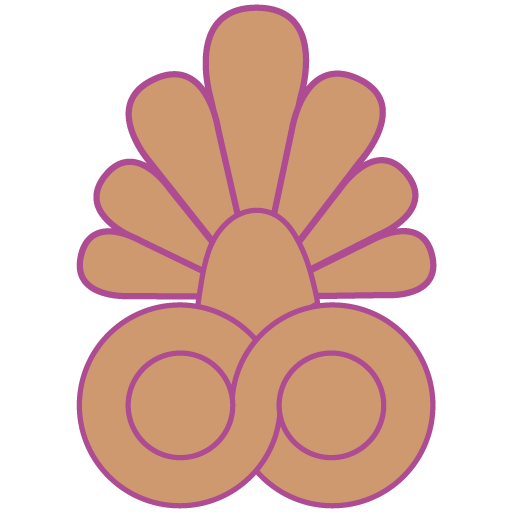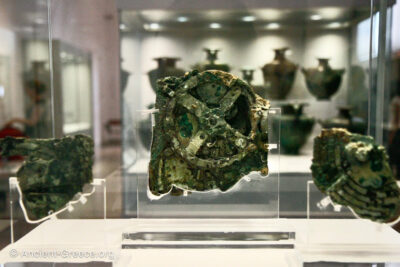Antikythera Mechanism bronze fragment. Found on an ancient shipwreck off the coast of Antikythera island. Dated to 80 BCE (according to National Archaeological Museum signage next to it), or to the 2nd century BCE (according to wikipedia). The mechanism has 32 gear wheels and plaques bearing Greek inscriptions relating to the signs of the zodiac and the months. It is accepted that the machine is a calendrical computing machine: it determines the time on the basis of the movements of the sun and moon, the relationship between them (eclipses), and the movements of the other stars and planets known at that period.
The mechanism was probably made at the School of Poseidonios on Rhodes. Cicero, who visited the island in 79/78 BC, reports that a similar device was made by the Stoic philosopher Poseidonios of Apameia. The design of the Antikythera mechanism appears to follow the tradition of Archimedes’ planetarium devices, and to be connected with sundials. Its operation is based on the use of gear wheels. The differential gear assembly used to take the difference between two rotations is first found in the Antikythera mechanism, which is one of the most important achievements of ancient technology.
Exhibited at the National Archaeological Museum in Athens, Greece.
© All rights reserved 2002-2025


